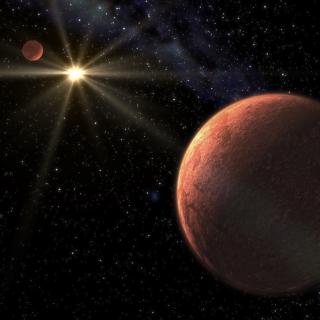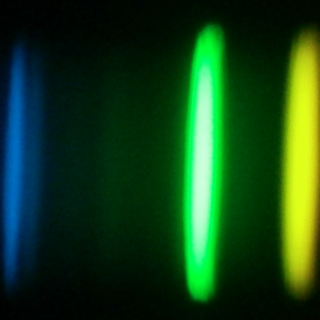Bibcode
Passegger, V. M.; Suárez Mascareño, A.; Allart, R.; González Hernández, J. I.; Lovis, C.; Lavie, B.; Silva, A. M.; Müller, H. M.; Tabernero, H. M.; Cristiani, S.; Pepe, F.; Rebolo, R.; Santos, N. C.; Adibekyan, V.; Alibert, Y.; Allende Prieto, C.; Barros, S. C. C.; Bouchy, F.; Castro-González, A.; D'Odorico, V.; Dumusque, X.; Di Marcantonio, P.; Ehrenreich, D.; Figueira, P.; Génova Santos, R.; Lo Curto, G.; Martins, C. J. A. P.; Mehner, A.; Micela, G.; Molaro, P.; Nari, N.; Nunes, N. J.; Pallé, E.; Poretti, E.; Rodrigues, J.; Sousa, S. G.; Sozzetti, A.; Udry, S.; Zapatero Osorio, M. R.
Bibliographical reference
Astronomy and Astrophysics
Advertised on:
4
2024
Journal
Citations
12
Refereed citations
9
Description
GJ 9827 is a bright, nearby K7V star orbited by two super-Earths and one mini-Neptune on close-in orbits. The system was first discovered using K2 data and then further characterized by other spectroscopic and photometric instruments. Previous literature studies provide several mass measurements for the three planets, however, with large variations and uncertainties. To better constrain the planetary masses, we added high-precision radial velocity measurements from ESPRESSO to published datasets from HARPS, HARPS-N, and HIRES and we performed a Gaussian process analysis combining radial velocity and photometric datasets from K2 and TESS. This method allowed us to model the stellar activity signal and derive precise planetary parameters. We determined planetary masses of Mb = 4.28−0.33+0.35 M⊕, Mc = 1.86−0.39+0.37 M⊕, and Md = 3.02−0.57+0.58 M⊕, and orbital periods of 1.208974 ± 0.000001 days for planet b, 3.648103−0.000010+0.000013 days for planet c, and 6.201812 ± 0.000009 days for planet d. We compared our results to literature values and found that our derived uncertainties for the planetary mass, period, and radial velocity amplitude are smaller than the previously determined uncertainties. We modeled the interior composition of the three planets using the machine-learning-based tool ExoMDN and conclude that GJ 9827 b and c have an Earth-like composition, whereas GJ 9827 d has an hydrogen envelope, which, together with its density, places it in the mini-Neptune regime.
Extracted radial velocities from ESPRESSO and HARPS used in this work are available at the CDS via anonymous ftp to cdsarc.cds.unistra.fr (ftp://130.79.128.5), or via https://cdsarc.cds.unistra.fr/viz-bin/cat/J/A+A/684/A22
Échelle SPectrograph for Rocky Exoplanets and Stable Spectroscopic Observations. Based on guaranteed time observations collected at the European Southern Observatory under ESO programme(s) 1102.C-0744, 1104.C-0350 by the ESPRESSO Consortium.
Related projects

Very Low Mass Stars, Brown Dwarfs and Planets
Our goal is to study the processes that lead to the formation of low mass stars, brown dwarfs and planets and to characterize the physical properties of these objects in various evolutionary stages. Low mass stars and brown dwarfs are likely the most numerous type of objects in our Galaxy but due to their low intrinsic luminosity they are not so
Rafael
Rebolo López

Exoplanets and Astrobiology
The search for life in the universe has been driven by recent discoveries of planets around other stars (known as exoplanets), becoming one of the most active fields in modern astrophysics. The growing number of new exoplanets discovered in recent years and the recent advance on the study of their atmospheres are not only providing new valuable
Enric
Pallé Bago

Chemical Abundances in Stars
Stellar spectroscopy allows us to determine the properties and chemical compositions of stars. From this information for stars of different ages in the Milky Way, it is possible to reconstruct the chemical evolution of the Galaxy, as well as the origin of the elements heavier than boron, created mainly in stellar interiors. It is also possible to
Carlos
Allende Prieto